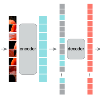Dose volume histogram (DVH) metrics are widely accepted evaluation criteria in the clinic. However, incorporating these metrics into deep learning dose prediction models is challenging due to their non-convexity and non-differentiability. We propose a novel moment-based loss function for predicting 3D dose distribution for the challenging conventional lung intensity modulated radiation therapy (IMRT) plans. The moment-based loss function is convex and differentiable and can easily incorporate DVH metrics in any deep learning framework without computational overhead. The moments can also be customized to reflect the clinical priorities in 3D dose prediction. For instance, using high-order moments allows better prediction in high-dose areas for serial structures. We used a large dataset of 360 (240 for training, 50 for validation and 70 for testing) conventional lung patients with 2Gy $\times$ 30 fractions to train the deep learning (DL) model using clinically treated plans at our institution. We trained a UNet like CNN architecture using computed tomography (CT), planning target volume (PTV) and organ-at-risk contours (OAR) as input to infer corresponding voxel-wise 3D dose distribution. We evaluated three different loss functions: (1) The popular Mean Absolute Error (MAE) Loss, (2) the recently developed MAE + DVH Loss, and (3) the proposed MAE + Moments Loss. The quality of the predictions was compared using different DVH metrics as well as dose-score and DVH-score, recently introduced by the AAPM knowledge-based planning grand challenge. Model with (MAE + Moment) loss function outperformed the model with MAE loss by significantly improving the DVH-score (11%, p$<$0.01) while having similar computational cost. It also outperformed the model trained with (MAE+DVH) by significantly improving the computational cost (48%) and the DVH-score (8%, p$<$0.01).
翻译:在诊所中,DVH值是广泛接受的体积直方图(DVH)测量标准。然而,将这些量度纳入深度学习剂量预测模型(DVH$)具有挑战性。然而,将这些量度纳入深度学习剂量的PV48D值预测模型,具有挑战性常规肺密集调制辐射治疗(IMRT)计划,我们提出一个新的基于时间的损失函数预测3D剂量分布,用于预测具有挑战性的常规肺部强度调制辐射治疗(IMRT)计划。基于时间的损失函数是可调和可差异的,可以很容易地将DVH(DVH)测量度指标纳入任何深层次学习框架,而无需计算间接费用。在3DD(PT)测算目标量(PTV)和器官-剂量预测值预测模型(EVH)中,使用高剂量地区预测,对序列结构结构进行更好的预测。我们使用了360(240)个基于时间的3DLMA(OAR)的模型模型和模型(DLDDDD) 模拟模型(我们通过测算方法对成本进行了大幅改进了AVDFMD(MA(MA) 3O(MA),同时对数字数据做了成本分析,我们用3OLILVDLLVD(MLL)的模型做了大量数据分析,作为最新数据分析,作为最新数据分析,以不同的分析。



